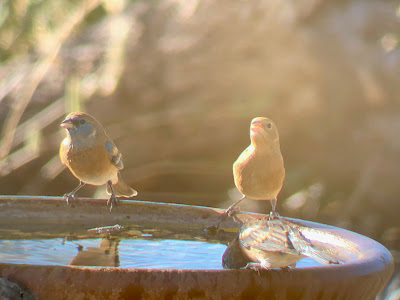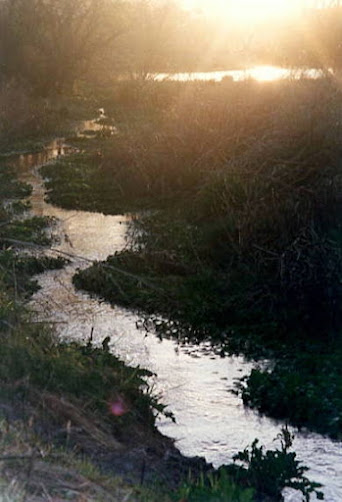Welcoming Newcomers
Typically, Lazuli Buntings migrate to the California coast and west-central inland states each year to breed, then form small flocks and start to molt some of their feathers right before beginning their annual fall migration. They begin their migration by flying to southern Arizona, southern New Mexico, or northern Sonora for 1–2 months. Then they continue migrating farther south to spend their winters along the west coast of Mexico, and complete their molting there.
While migrating or in their breeding grounds in the US, Lazuli Buntings prefer habitats that are near streams or creeks, brushy or wooded areas, and thickets at the edges of agricultural fields. They are not fussy about elevation though, and can be found from sea level to more than 9,500 feet! On their wintering grounds in western Mexico, they prefer overgrown fields, thorny forests and hedgerows.
The males and females are both quite beautiful: the bright blue feathers on the head, wing, and tail of the male makes a striking contrast to the cinnamon-colored band across its breast and its pale belly. The females are a warm, buttery brown with a cinnamon-colored breast and belly, and a blue tint on their wing and tail feathers. Both have a small, dark, conical bill, similar to a finch, and primarily eat small insects, seeds, and berries.
Lazuli Buntings are some of the smallest members of the bird family that includes Cardinals, Pyrrhuloxias, Tanagers, and Grosbeaks. In the video above, you can see that they are only slightly larger than the Audubon's Yellow-rumped Warblers that are sharing the birdbath with them. They get their name from the semi-precious stone Lapis lazuli, and their Latin name- Passerina amoena – means “beautiful sparrow”. That is a good description indeed of their coloration and size! Their Spanish name is Azulillo Lapislázuli, which rolls off the tongue with beautiful musicality too, don’t you think?
 |
| A group of mature male Lazuli Buntings |
Here’s a few other interesting things about these birds: each male sings a unique combination of notes, created when they are young by rearranging and combining fragments from the songs of several mature males they hear singing during breeding season. The notes and patterns that each young male puts together is their own unique song for life. The females collect grasses along with small bark strips and leaves, then weaves them all together with spiderwebs or tent caterpillar silk to form a cup-shaped nest, nestled in the edge branches of a small shrub.
One never knows when newcomers will arrive, and whether they will find sustenance in our garden. It’s a joy to see them foraging in the garden beds and paths, drinking and dipping in the birdbaths, and we hope we are lucky enough to have them remain with us until spring calls them back to their breeding grounds. While they are here, we welcome them to take what they need, and we look forward to their return for years to come.
For more info about these enchanting little birds, visit www.allaboutbirds.org
Photo and video credits:
- Male and female LB at birdbath by Emily Bishton
- Desert habitat by Emily Bishton
- Male on branch by www.naturespicsonline.com, public domain
- Video of male and female LB with Audubon's Yellow-rumped Warblers by Emily Bishton
- LB Males at birdbath by Emily Bishton





